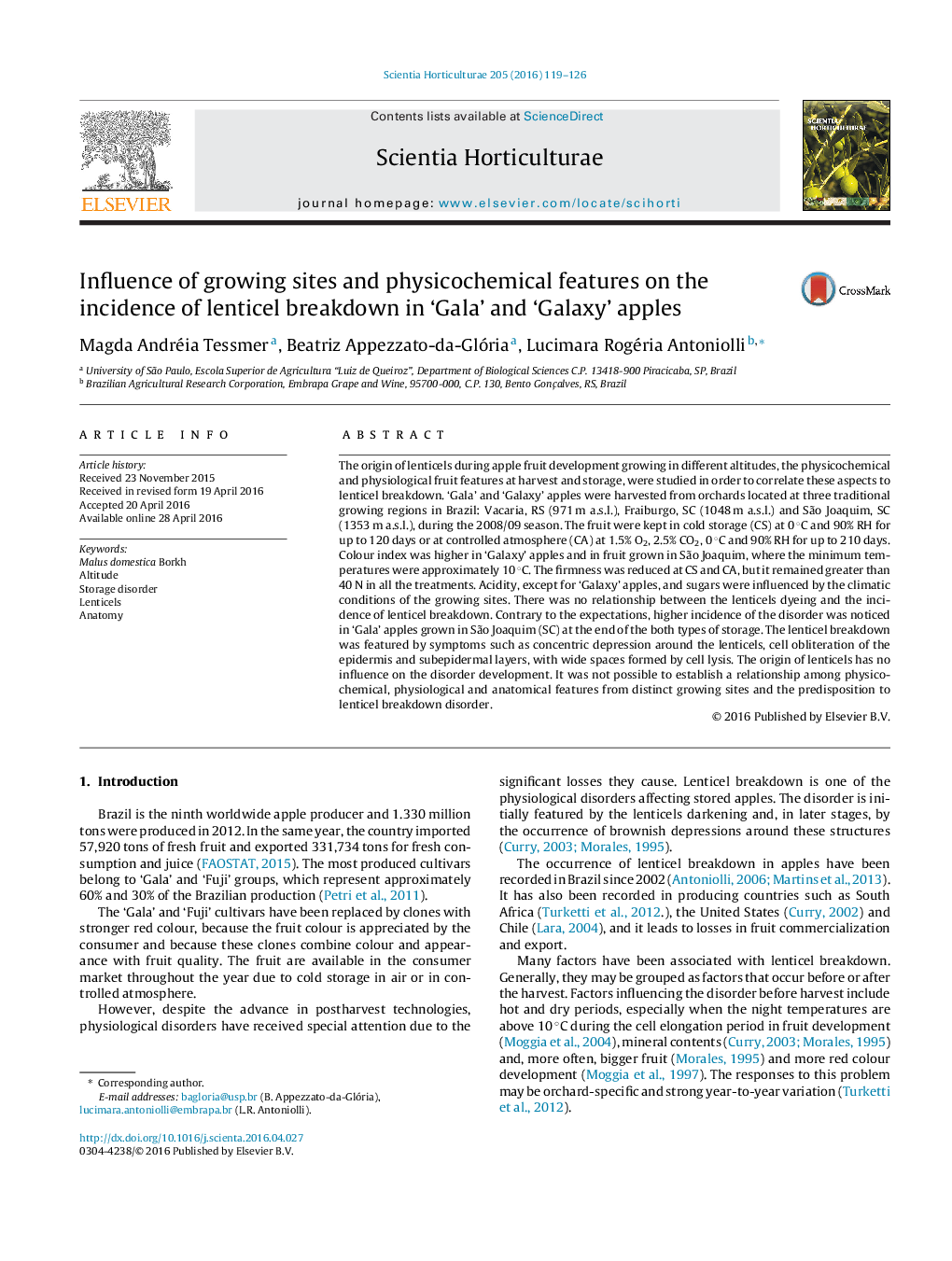| Article ID | Journal | Published Year | Pages | File Type |
|---|---|---|---|---|
| 4566045 | Scientia Horticulturae | 2016 | 8 Pages |
•Temperature and altitude at the growing areas, as well as the physicochemical features of apple fruit, were studied to understand occurrence of lenticel breakdown.•Lenticels dyeing test was not efficient in detecting lenticel breakdown.•Occurrence of lenticel breakdown was higher in ‘Gala’ apples from the site with higher maximum temperatures during fruit development.
The origin of lenticels during apple fruit development growing in different altitudes, the physicochemical and physiological fruit features at harvest and storage, were studied in order to correlate these aspects to lenticel breakdown. ‘Gala’ and ‘Galaxy’ apples were harvested from orchards located at three traditional growing regions in Brazil: Vacaria, RS (971 m a.s.l.), Fraiburgo, SC (1048 m a.s.l.) and São Joaquim, SC (1353 m a.s.l.), during the 2008/09 season. The fruit were kept in cold storage (CS) at 0 °C and 90% RH for up to 120 days or at controlled atmosphere (CA) at 1.5% O2, 2.5% CO2, 0 °C and 90% RH for up to 210 days. Colour index was higher in ‘Galaxy’ apples and in fruit grown in São Joaquim, where the minimum temperatures were approximately 10 °C. The firmness was reduced at CS and CA, but it remained greater than 40 N in all the treatments. Acidity, except for ‘Galaxy’ apples, and sugars were influenced by the climatic conditions of the growing sites. There was no relationship between the lenticels dyeing and the incidence of lenticel breakdown. Contrary to the expectations, higher incidence of the disorder was noticed in ‘Gala’ apples grown in São Joaquim (SC) at the end of the both types of storage. The lenticel breakdown was featured by symptoms such as concentric depression around the lenticels, cell obliteration of the epidermis and subepidermal layers, with wide spaces formed by cell lysis. The origin of lenticels has no influence on the disorder development. It was not possible to establish a relationship among physicochemical, physiological and anatomical features from distinct growing sites and the predisposition to lenticel breakdown disorder.
